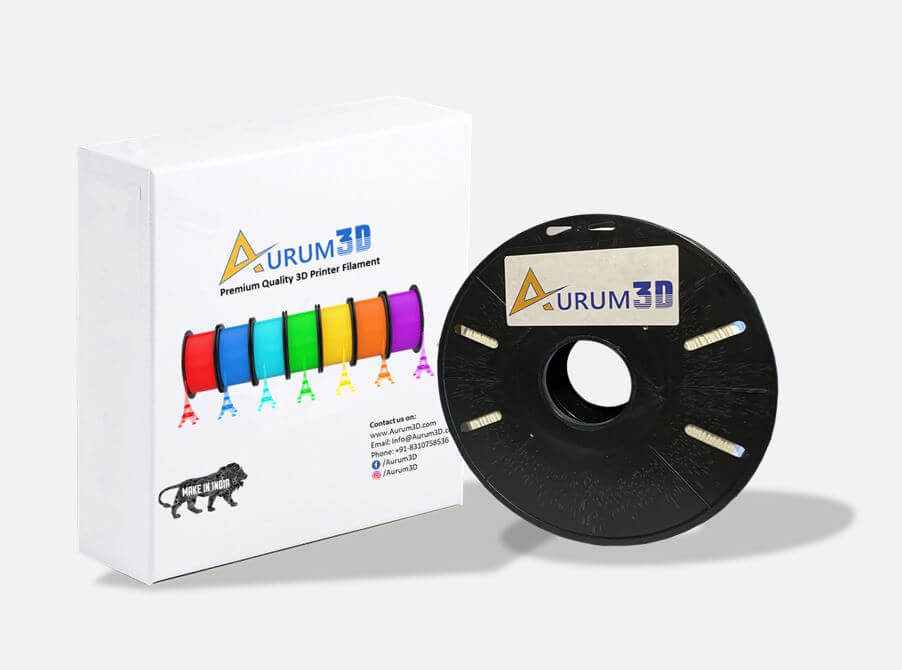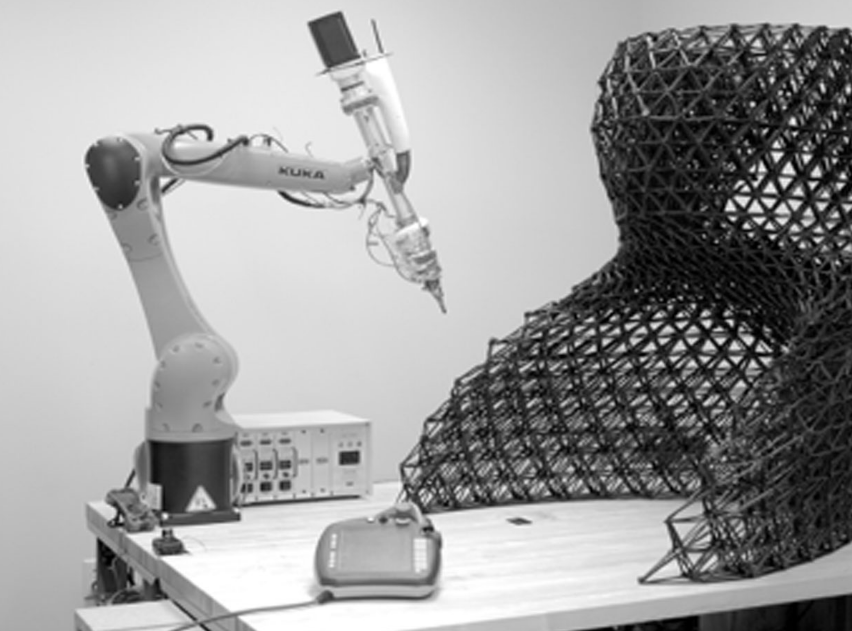3D
printing filaments or printing materials are thermoplastics that melt
and do not burn after being exposed to heat. The flexible and durable
nature of thermoplastics makes it easier for engineers to mold and shape
them in a number of ways using the appropriate 3D printer. The 3D
printers produce objects, models, prototypes, and patterns by depositing
the melted filament layer by layer based on a digital file.
According to Wikipedia, “3D
printing filament is the thermoplastic feedstock for fused deposition
modeling 3D printers. There are many types of filament available with
different properties, requiring different temperatures to print.”
3D printing a consumer product or industrial model, you have the option to choose from a wide range of 3D printing filaments.
The 3D printing materials differ from each other in many aspects,
including physical property. This 3D printing filaments buying guide
will make it easier for you to differentiate between widely used 3D
printing materials and choose the appropriate 3D printer filament for
your project.
3D Printing Filaments Buying Guide: Types, Usage, Pros, and Cons
PLA Filament

Poly Lactic Acid (PLA) is an easy-to-use form of thermoplastic that is prepared from organic materials like sugarcane and cornstarch. In addition to being a safe filament, PLA helps you to produce items with a smooth appearance. PLA is used widely for 3D printing both consumer products and industrial parts. However, moisture often makes PLA brittle.
ABS Filament
Acrylonitrile butadiene styrene (ABS) is a petroleum-based thermoplastic with superior strength and moderate flexibility. Its impact-resistant properties make ABS one of the popular 3D printing materials for producing a wide range of items – musical instruments, toys, automotive parts, and plastic objects. You can opt for ABS to 3D-print strong and durable objects in a cost-efficient way. But ABS melts at a higher temperature and creates unpleasant fumes during the 3D printing process.
PET Filament
PolyEthylene Terephthalate (PET) is a harmless and durable form of material that is used widely for producing plastic bottles. PET’s transparent and colorless form changes when it is exposed to heat or cold. Its strong and flexible nature makes PET one of the most preferred 3D printing materials to create cups, utensils, kitchen appliances, and food containers. You can opt for PET to 3D-print items that withstand water and moisture. PET is not one of the easy-to-use 3D printing filaments.
PETT Filament
PolyEthylene Trimethylene Terephthalate (PETT) is a food-safe but non-biodegradable 3D printing filament. The recyclable 3D printing material is used widely for producing food containers and kitchen appliances. In addition to being strong, durable, and safe, PETT does not absorb water or moisture from the environment. But beginners often find it difficult to 3D-print items using PETT.
Wood Filament
This 3D printing material is created by combining recycled wood and special-binding polymer. You can opt for the wood filament to produce items that look, feel, and smell like real wood. You can easily change the shade and surface of objects during the 3D printing process by increasing temperature. However, you must remember that wood filament is both softer and weaker than other 3D printing materials including PLA.
Metal Filament

You
can opt for the metal filament to make the 3D-printed items look and
feel like metal items. The metal filament is produced by combining the
fine metallic powder with PLA filament. You can customize the metal
filament by adding a variety of metallic powder – copper, brass, bronze,
aluminum, and stainless steel. The items 3D-printed with metal filament
are extremely durable. But beginners often find it difficult to
3D-print items using metal filament.
Nylon Filament
Nylon is one of the strong, durable, and flexible 3D printing filaments which is used widely for producing consumer products, containers, industrial tools, machine parts, and mechanical components. In addition to being 100% thermoplastic, nylon can be re-melted and recycled without putting in extra time and effort. But 3D-printed items must be stored properly and effectively as nylon absorbs moisture from the environment.
PVA Filament
Engineers often use polyvinyl alcohol (PVA) as a support material while using ABS or PLA as the primary 3D printing filament. PVA makes it easier for you to 3D print a variety of items as a durable, biodegradable, and non-toxic filament. However, PVA is much more expensive than other 3D printing filaments. Also, it is one of the difficult-to-source 3D printing materials.
3D Printing Filaments Buying Guide: Things to Consider or Parameters to Use
As noted earlier, the physical properties of 3D printing materials differ. In addition to differentiating between widely used 3D printer filaments, you must evaluate each 3D printing filament according to the precise needs of your project using a slew of parameters.
Usability/Printability
Some 3D printing filaments are easier to use than others. For instance, beginners find it easier to 3D-print items using PLA or PET-G. However, PLA is used widely by manufacturers to 3D-print prototypes and functional parts. Hence, you must compare the usability of widely used 3D printing materials according to your experience and expertise.
Complexity
Some
3D printing filaments are best suited for producing complex and
complicated designs. Engineers often opt for mid-level 3D printing
materials like PAHT CF15 or PPGF30 while 3D-printing complex designs.
But these 3D printing filaments are not easy to print. That is why; you
must keep in mind the complexity of the design while comparing 3D
printing materials.
Environment
Unlike consumer products, industrial tools and prototypes are exposed to heat, chemicals, and stress regularly. Hence, you need to opt for an advanced filament like ABS or TPU to 3D-print prototypes that withstand heat and chemicals effectively on a regular basis. Likewise, you should consider a durable and reinforced 3D printing material like PAHT CF15 to build industrial tools with more resistance.
Flexibility and Durability

3D printing filaments differ from each other in the category of flexibility and durability. Engineers often opt for TPU as a mid-level 3D printer filament to produce items and instruments that last longer despite being bendable. Likewise, they make industrial and commercial objects more durable using carbon fiber materials.
Stress Resistance
Some
3D printing filaments are effective in resisting more stress than
others. You can make the 3D-printing item withstand higher stress by
opting for a filament that resists heat, chemicals, and the environment
successfully. For instance, you can make the outdoor 3D printed items
withstand various weather conditions by choosing PP. Likewise; you need
to consider specific filaments to withstand heat or water.
You
have the option to choose from a wide range of filaments while
3D-printing an object, model, prototype, or part. But you must remember
that 3D printing filaments differ from each other in several aspects.
You must refer to this 3D printing filaments buying guide to compare 3D printing materials using the appropriate parameters according to the precise needs of your project.
Keyword: 3D printing filaments buying guide
References
https://edutechwiki.unige.ch/en/3D_printer_filament
https://www.bcn3d.com/how-to-choose-3d-printing-material/
https://www.think3d.in/think3d-top10-3d-printer-filament-types-fdm/
https://www.thomasnet.com/articles/custom-manufacturing-fabricating/types-of-3d-printer-filament/
https://robu.in/3d-printer-filament-types/


No comments:
Post a Comment